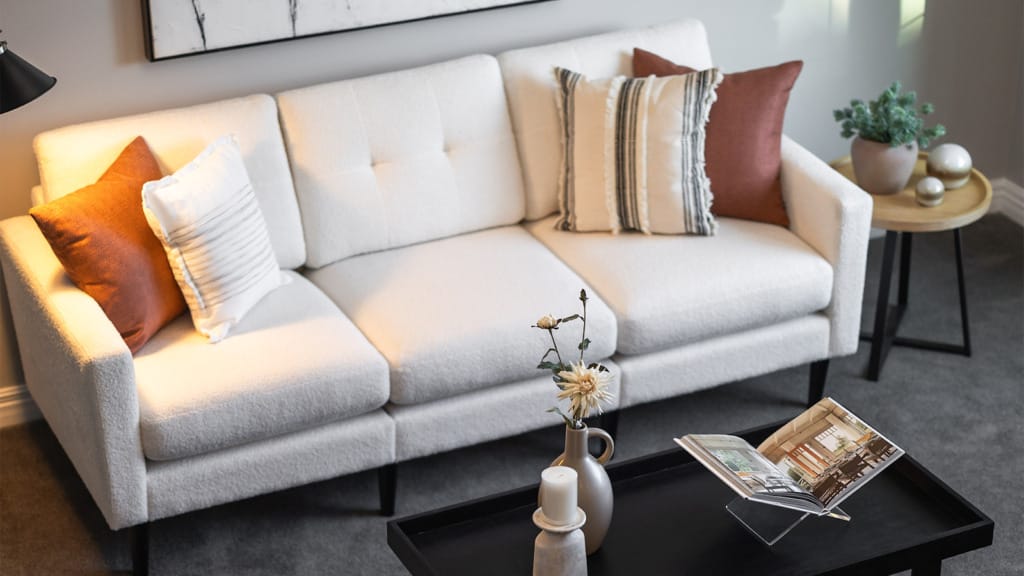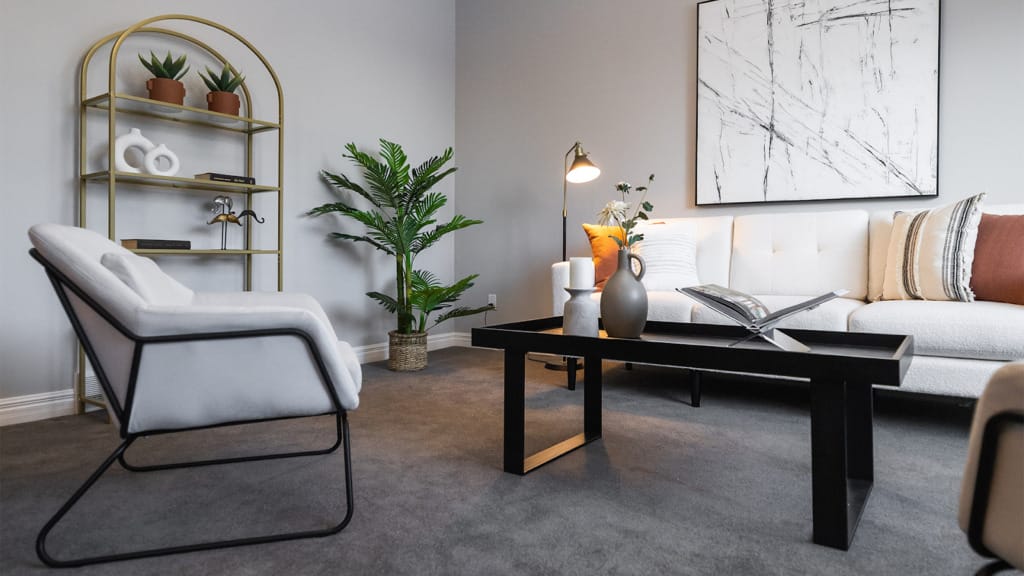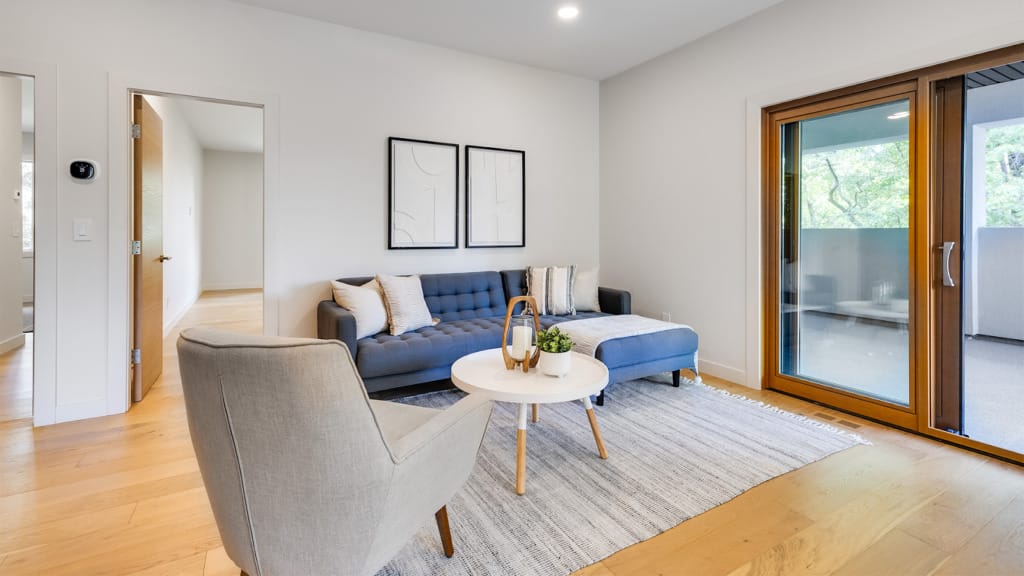When it comes to selling real estate, first impressions aren’t just important—they are everything. Buyers start judging a property within seconds of entering, often relying more on emotion than logic. Now imagine they walk into a completely empty house: no warmth, charm, or indication of how the space could work for their lives. Instead of seeing a future home, they see cold floors, echoey walls, and awkward corners.
This is the challenge of selling a vacant home.
Empty spaces can feel sterile and overwhelming. Without furniture or decor, rooms may appear smaller, less functional, or harder to envision. That’s why vacant home staging has become a non-negotiable tool in competitive markets. Staging transforms empty rooms into compelling narratives that buyers connect with..fast!
If you’re preparing to sell a property, this guide will explain why vacant staging matters, how it works, and why it’s one of the smartest investments a seller can make.
The Psychology Behind Vacant Staging
Most buyers simply can’t visualize. According to the National Association of Realtors (NAR), 82% of buyers said it was easier to visualize a staged home as their own. That’s because staging leverages spatial visualization.
Vacant rooms, by contrast, can confuse or intimidate. Is that room big enough for a king bed? Will the dining area fit a full table set? These doubts can be deal breakers.
It is safe to say home buying is emotional. Even though budget, location, and condition matter, buyers ultimately choose a home that “feels right.” A staged home taps into that emotional response, creating an atmosphere of comfort and aspiration.
This emotional connection is often missing in unstaged or empty homes, making them harder to sell, even if they’re objectively perfect on paper.
Creating a Lifestyle Buyers Can Envision
With curated furniture, accessories, and layout flow, staging creates a lifestyle. Whether it’s a cozy reading nook, a functional home office, or a welcoming breakfast area, every element says: You could live here.
Here’s a step-by-step guide to staging an empty house if you’re unsure where to begin.
Enhancing Perceived Value Through Furnishing
Contrary to popular belief, empty rooms often feel smaller than staged ones. That’s because furniture provides a frame of reference. A staged living room immediately communicates scale and purpose. A vacant one? Just four walls.
Have a weird nook, a narrow space, or an open floor plan that needs defining? Furniture solves that. It offers clarity and direction!
Beyond function, vacant house staging tips include layering rugs, adding art and using soft lighting to warm up spaces. These aren’t just decor tricks—they’re proven methods of increasing emotional appeal.
For more ideas, check out our budget-friendly staging tips for empty houses.
Overcoming the Sterility of Empty Homes
The Problem with Bare Walls and Echoes
Bare homes often feel echoey, impersonal, and devoid of character. Even new builds can come off as cold and unfinished without furniture and accessories.
Adding Soft Furnishings and Textures for Depth
Layered textiles—like throws, cushions, curtains, and area rugs—add depth and texture. This visual richness can shift a buyer’s perception from plain to premium.
Using Art, Rugs, and Lighting to Add Warmth
Strategically placed mirrors, tasteful wall art, and cozy lighting fixtures work wonders in making empty spaces appealing. These touches guide the buyer’s attention and reduce visual monotony.
Need help designing the right look? Learn more about our vacant home staging services in Edmonton.

Highlighting Key Selling Features
Directing Buyer Attention to Built-Ins, Windows, and Fireplaces
Every home has something worth showcasing—be it a fireplace, bay window, or architectural detail. But in an empty home, these features can go unnoticed.
Staging helps highlight selling features by drawing the eye toward them with thoughtful furniture placement and accent lighting.
Using Furniture to Guide Flow and Focal Points
Designers use staging to create flow—how someone walks through a room and where their eyes land first. This is a subtle yet powerful form of visual merchandising that nudges buyers in the right direction.
Showing Storage Potential and Layout Flexibility
Buyers love storage—but they need to see it. Staging bedrooms, closets, and mudrooms shows off potential without being cluttered. Even awkward spaces can be presented as functional with the right setup.
The ROI of Vacant Staging
A 2023 RESA study revealed that staged vacant homes sold 73% faster on average than unstaged ones. Plus, they often receive higher offers—up to 10% more, depending on the market.
Discover more about how staging increases property value.
When buyers can’t connect with a space, they may either walk away or submit lower offers. Investing in vacant home staging helps you avoid costly price drops and long market days.
Let’s say your staging investment is $2,500, and the home sells $15,000 above asking. That’s a 500%+ return. Compare that to the average price reduction sellers make after 60 days on market—usually $10,000 or more. It’s clear which is the smarter move.
Soft Staging as an Alternative for Budget-Conscious Sellers
Soft staging uses decor elements—like art, lighting, mirrors and plants—without actual furniture. It’s ideal for condos, smaller properties, or tight budgets.
Think throw pillows, vases, coffee table books, curtains, and baskets. When curated correctly, even minimal pieces can add warmth and character.
For those who can’t commit to full staging, soft staging still provides significant benefits. It adds life to a space and improves photos for listings—without the heavy lifting.
Learn more about affordable soft staging here.

Vacant Staging for Different Property Types
Each property type has its own staging approach. Condos may focus on maximizing perceived space. Single-family homes benefit from staging multiple rooms. Luxury homes require upscale furnishings that reflect the listing price.
Buyer psychology plays a big role. Are your buyers young professionals? Families? Retirees? Design choices—from color palette to layout—should reflect what your audience values most.
Here’s why staging your home for showings matters so much.
Conclusion
Vacant homes don’t just need staging—they demand it.
Without it, even the most beautiful property can feel cold and uninspired. But with the right staging approach, every room transforms into an inviting, functional, emotionally compelling experience. From boosting perceived value to speeding up the sale process, the benefits are simply too valuable to ignore.
Whether you choose full staging or a soft approach, make it part of your real estate strategy. After all, staging a home without furniture isn’t just an option anymore—it’s a missed opportunity.Ready to turn your empty space into a buyer magnet? Explore staging services with The Staging Place and let your property shine.


